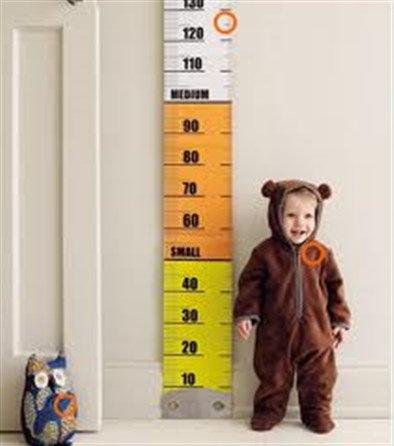source:iloubnan.info
BEIRUT | iloubnan.info, with agencies - December 20, 2012, 15h10
A campaign lead by the Lebanese Ministry of Education in North Lebanon detected short stature in 4% of the screened children. The campaign is also aimed at boosting efforts to facilitate early diagnosis of potential underlying conditions.
With assessment of a child’s height and weight recognized as an indicator of general health and well-being, a collaborative screening campaign by the Lebanese Ministry of Education, the Lebanese Pediatric Society, and Danish pharmaceutical company Novo Nordisk, found 4% of children attending KG-1 and Elementary levels 1 to 5 in public schools in North Lebanon to have short stature as defined by 2 Standard Deviations (SD) or more below the established mean.
The campaign, first launched in 2010 and covering 40,000 children in 228 public schools, concluded with recommendations for 970 kids to receive medical follow up in their schools to monitor their height over at least six months, and another 661 with more severe short stature requiring immediate attention by a growth specialist.
“Regular growth monitoring in children through a standardized weight and stature measuring program is a cornerstone of their care, and an important focus for us,” said Sonia Najem, School-Health Program Coordinator at the Ministry of Education. “This is why we are encouraging all parents to actively follow-up on the school health assessment results in order to identify at an early stage and treat any potential reasons behind abnormal growth.”
“With current estimates putting the average age of treatment at 9 to 11 years old, more could be done to facilitate earlier diagnosis and improve treatment outcome,” said Dr. Eliane Khallouf-Callas, President of the Lebanese Pediatric Endocrinology Club at the Lebanese Pediatric Society. “The earliest we detect and investigate a significant change in the child’s own growth chart, the better his or her chances to optimize final adult height and minimize the impact of any potential underlying condition.”
Growth monitoring has been part of preventive child health programs for more than a century2 and short stature or growth retardation is recognized as a relatively early sign of poor health.2
For early identification of children with abnormal growth, well-defined referral criteria and a good diagnostic work-up after referral are needed.2 However, children are often diagnosed at a late age1 leaving those whose short stature is detected in mid-late childhood already much shorter than their peers and making it harder for them to achieve a final height within the normal population range3,4.
The 2012 Measure Height/Measure Health Campaign “went on to focus on raising awareness among parents, school nurses and frontline physicians on the importance of regular growth monitoring and early referral of children with short stature,” said Dr Rita Sfeir, General Manager, Novo Nordisk Lebanon.
The ongoing Campaign held a number of Continuous Medical Education-accredited (CME) conferences for physicians nationwide. The events, attended by over 250 pediatricians, featured the distribution of a “Growth Toolkit” facilitating earlier diagnosis and communication with parents.
Cooperation with schools directorships also led to educational conferences being held for health counselors and school nurses in around 100 public and 30 private schools in Beirut and Mount Lebanon. Those were followed by the dissemination of pamphlets to parents.
Underlying Conditions of Growth Abnormalities:
Optimal growth depends on heredity, normal skeletal and endocrine function, adequate nutrition, absence of chronic disease, and a nurturing environment. Fetal, infant, environmental, and maternal factors can interact to impair intra-uterine and post-natal growth. If a child is failing to grow due to an underlying medical problem, his or her visible growth failure means that other more serious things are going on inside the body. Height is simply an early signal for parents to take their child to the physician.
Normal height growth rates vary according to age. Children during the first year of life should grow 24 cm. During the second, growth slows to an average of 11 cm. During the third, growth averages 8 cm. From age four until puberty, growth should be at least 5-6 cm/year. Pubertal changes prompt a growth spurt of around 9 cm/year usually starting by the age of 10 for girls and 12 for boys.
Many conditions which interfere with children's growth are treatable. Growth hormone, thyroid hormone, and others are medications which are as close to nature as possible helping children with a wide range of growth deficiencies such as Turner Syndrome, Russell-Silver Syndrome, and Intrauterine Growth Retardation.
The Lebanese Society of Pediatrics recommends the regular measurement of height and weight at least once per year. The measurements have to be plotted on a growth chart in order to detect any deviation under – 2SD from the mean, in this case the child needs to undergo clinical assessment, blood tests, bone age determination and sometimes more sophisticated stimulation tests in order to set up the diagnosis and the appropriate treatment.
About Novo Nordisk
Headquartered in Denmark, Novo Nordisk is a global healthcare company with 87 years of innovation and leadership in diabetes care. The company also has leading positions within hemophilia care, growth hormone therapy and hormone replacement therapy. For more information, visit www.novonordisk.com.
image: www.pu.blish.us














